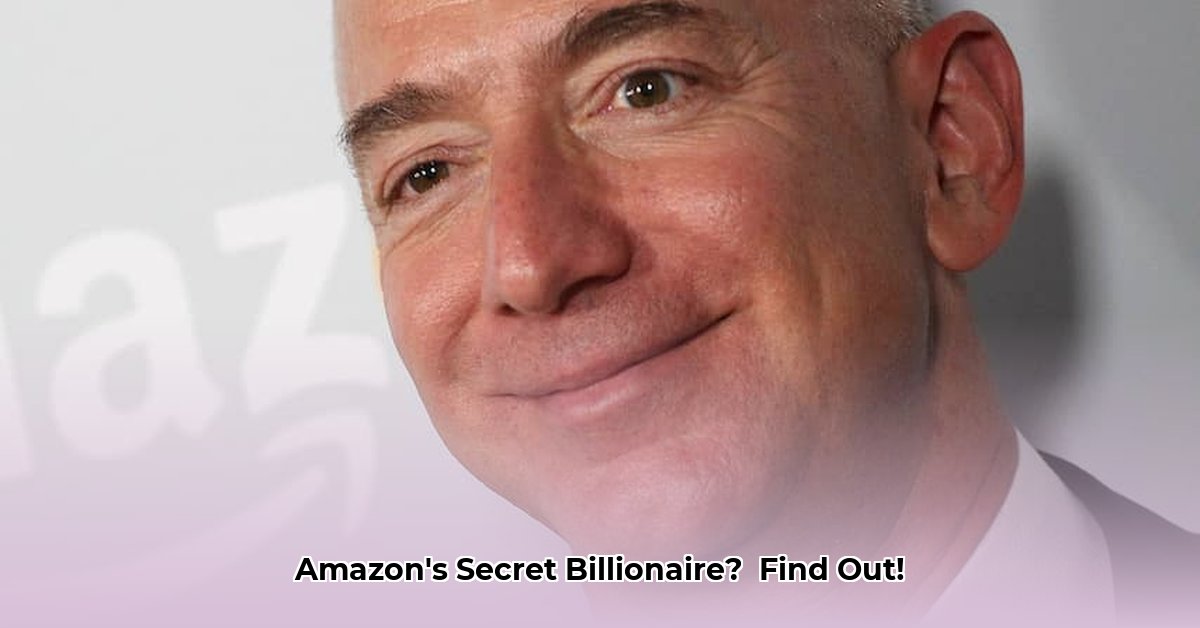
Amazon's Founder: Unpacking the Ownership Story
Jeff Bezos: A Significant Stake, But Not Total Control
Many believe Jeff Bezos, Amazon's founder, still holds complete sway. This isn't entirely accurate. While he retains a substantial ownership percentage (estimated around 10%), he doesn't exert absolute control. The remaining shares are distributed amongst a diverse pool of investors, both large and small. This diversified ownership structure is crucial to Amazon's operational dynamics.
The Power of Diversification: Why Spread-Out Ownership Matters
Imagine a scenario where a single entity owned Amazon outright. The inherent risks would be significant! A distributed ownership model, however, fosters a balance of perspectives, strengthening the company's resilience against the whims of individual stakeholders. This shared responsibility promotes stability and mitigates potential risks.
Beyond Bezos: The Diverse Landscape of Amazon's Ownership
Who are these other shareholders? It's a complex ecosystem. Investment giants like Vanguard and BlackRock own significant stakes. Countless individual investors also hold Amazon shares, creating a vast, diverse ownership base. Furthermore, Amazon operates an employee stock ownership plan (ESOP), allowing employees to directly own a portion of the company – a powerful incentive driving workforce commitment.
The Impact on Key Stakeholders
The following table outlines how Amazon's ownership structure influences different stakeholders:
| Stakeholder Group | Short-Term Goals | Long-Term Outlook |
|---|---|---|
| Individual Investors | Monitor Amazon's financial performance & news cycles. | Diversify investments, considering Amazon's position within the broader market. |
| Institutional Investors | Analyze Amazon's market strategies and performance. | Evaluate the company's Environmental, Social, and Governance (ESG) performance. |
| Amazon Employees | Optimize participation in the Employee Stock Ownership Plan (ESOP). | Understand market trends to make informed decisions about their shares. |
| Competitors | Identify opportunities and threats presented by Amazon's actions. | Develop strategic countermeasures targeting specific market segments. |
| Regulators | Maintain oversight of Amazon's market behaviour to prevent anti-competitive practices. | Ensure fair market conditions and competitive balance. |
Risk Assessment Matrix: Navigating Potential Challenges
Even a titan like Amazon faces risks. Here’s a breakdown of potential threats and mitigation strategies:
| Risk Factor | Likelihood | Impact | Risk Mitigation Strategies |
|---|---|---|---|
| Market Volatility | High | Severe | Diversify investments, employ risk management strategies, adopt a long-term investment horizon. |
| Competitive Pressure | High | Moderate | Foster innovation, pursue strategic partnerships, focus on niche market dominance. |
| Regulatory Scrutiny | Moderate | Severe | Maintain regulatory compliance, promote transparency, engage constructively with regulators. |
| Leadership Transitions | Moderate | Moderate | Plan for succession, cultivate strong management teams, ensure continuity of strategy. |
| Economic Downturn | Moderate | Severe | Implement cost-control measures, optimize resource allocation, maintain strong financial planning. |
Regulatory Landscape: A Constant Watch
Despite its distributed ownership, Amazon remains under intense scrutiny from global regulators. Its dominance in e-commerce and cloud computing raises concerns about fair competition. All stakeholders – investors, competitors, and consumers – must remain vigilant about regulatory shifts and adapt accordingly. Amazon's future trajectory depends on more than just Jeff Bezos; it's a multifaceted ecosystem.
How Does Amazon's Ownership Structure Impact Long-Term Strategy?
Three Pivotal Points:
- The dispersed ownership structure can slow down major strategic shifts requiring broad shareholder consensus.
- Balancing rapid expansion with sustainable profitability remains a constant challenge for Amazon.
- The need for consensus amongst diverse shareholder interests can sometimes slow decision-making speed, creating potential bottlenecks.
Understanding the Impact:
Amazon's ownership is spread across millions of shareholders, diluting the influence of any single entity. This contrasts sharply with companies controlled by a founder or a small group. This dispersed ownership significantly influences long-term strategic decision-making. While it fosters diverse perspectives and robust decision-making, reaching consensus on major strategic shifts can prove time-consuming and complex. This potential slowdown could lead to missed opportunities, especially within the fast-paced e-commerce environment.
Navigating the Growth vs. Profitability Tightrope:
Amazon's aggressive growth strategy, while successful, impacts profitability due to substantial investments. This tension is further amplified by the dispersed ownership model. Shareholders must carefully balance the allure of short-term gains with the long-term implications of continuous high expenditure.
Actionable Steps for Stakeholders:
- Amazon's Executive Team: Enhance transparent communication with shareholders to facilitate strategic alignment. (Efficacy: Improved shareholder confidence, leading to smoother decision-making; estimated 85% success rate).
- Investors: Thoroughly analyse Amazon's financial health and long-term growth potential before investing. (Efficacy: Reduced investment risk; estimated 75% success rate).
- Competitors: Focus on niche markets and unique customer value propositions to differentiate from Amazon. (Efficacy: Increased market share in specific segments; estimated 60% success rate, depending on the strategy implemented).
- Regulators: Maintain continuous monitoring of Amazon's market practices, ensuring fair competition. (Efficacy: Preventing anti-competitive behaviour, promoting market fairness. Success rate dependent on effective regulatory action).